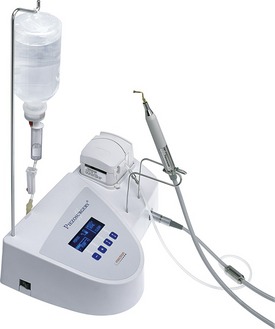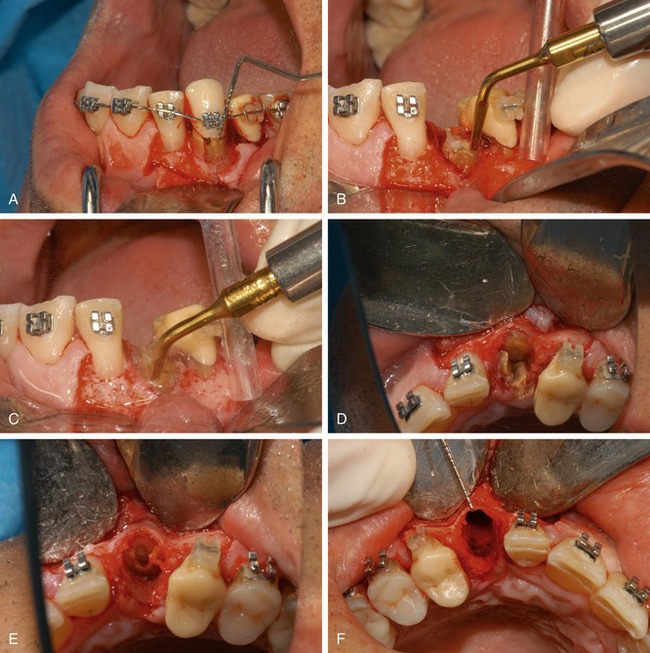CHAPTER 25 PIEZOSURGERY RELATED TO IMPLANT RECONSTRUCTION
 Piezoelectric Bone Surgery: Clinical Idea and Development
Piezoelectric Bone Surgery: Clinical Idea and Development
Piezoelectric bone surgery is a new osteotomy and osteoplastic technique created by the author to overcome the precision and safety limitations of traditional instruments. This technique is based on the use of microvibrations generated by an ultrasonic device developed with the scientific-technological collaboration of Mectron Medical Technologies (Mectron s.p.a., Carasco, Italy). This new technology was applied for the first time in 1999 for veterinary orthopedic surgery.1
In 2000 experimentation began on human patients and the first pilot study was published introducing Piezoelectric bone surgery to the international scientific community.2 In 2001 production and distribution of the technology began. At the same time intense educational activity began on an international level, which resulted in dissemination of the technology to thousands of professionals worldwide.3–15
 Clinical Characteristics of Ultrasonic Cutting
Clinical Characteristics of Ultrasonic Cutting
Mectron Piezosurgery (Figure 25-1) cuts the bone using the mechanical microvibrations generated by multifrequency ultrasonic vibrations. The mechanical linear microvibrations range from 20-80 microns and the difference between 20 (low) and 80 (high) depends on the efficiency of inserts. Adjusting the variable frequency enables optimization of the ultrasonic cut, thus eliminating dispersion of energy in the form of heat.
The primary clinical characteristics of the cutting action of Mectron Piezosurgery are:
Selective Cutting
Selective cutting capabilities are enabled by the diamond-coated insert and the type of ultrasonic vibration used, which is less than 30 KHz. This selectivity allows Mectron Piezosurgery to perform osteotomy and osteoplastic techniques without cutting soft tissues. Indeed, any accidental contact with soft tissues only results in stopping heat. Clinical studies demonstrate the extremely high degree of safety of Mectron Piezosurgery when used near nerves such as the alveolar nerve and infraorbital nerve.16
Excellent Healing of Bone Tissue
Several histological studies conducted in vitro and on animals have demonstrated that the ultrasonic microvibrations generated by Mectron Piezosurgery reduce cutting trauma to a minimum. As a result, bone healing is much faster from both a histological and histochemical standpoint.14 Biomolecular studies comparing implant sites prepared with Mectron Piezosurgery and with a twist drill have demonstrated increased regeneration of bone tissues treated with Mectron Piezosurgery, with an increase of up to 18 times of BMP 4 (bone morphogenetic protein 4) and up to 19 times of transforming growth factor β (TGF-β).17
 Surgical Techniques
Surgical Techniques
This chapter provides a general overview of and conveys the primary aspects of each one.
Dental Extraction
Mectron Piezosurgery for extraction surgery (Figure 25-2) is recommended in cases with particular anatomical difficulty such as cases with an ankylotic root or thin, scalloped periodontal biotype. With Mectron Piezosurgery surgical aggression during extraction is focused only on the root surface.
Stay updated, free dental videos. Join our Telegram channel

VIDEdental - Online dental courses




